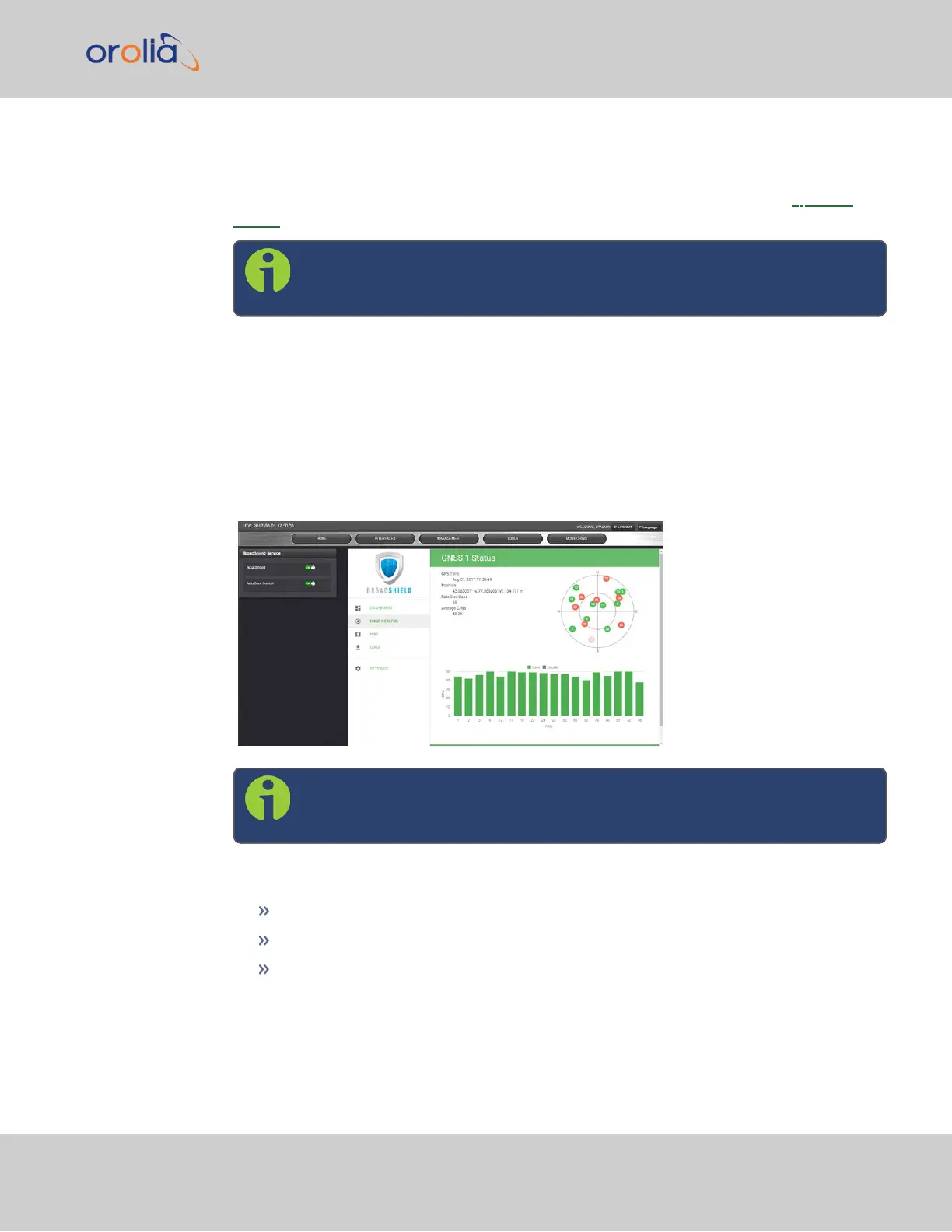a potential jamming incident, while a green line indicates that VersaSync may be subject to
a spoofing attack.
You can change the time scale by clicking on any of the labels between 1 HOUR and
7DAY.
Note: A VersaSync reboot will reset all history data (it can still be retrieved
via LOGS.)
Bottom graph
The bottom graph labeled Spectrum visualizes the current signal over the GPS frequency
band. Unusual amplitude spikes indicate a potential threat. If your system is equipped with
more than one GNSSreceivers, a green and an orange graph will indicate the signal level
for additional receivers.
GNSS 1 Status
Note: The BroadShield GNSS1 reference refers to the SecureSync GNSS 0
reference.
Status information
GPS Time: Time and Day as provided by VersaSync's GNSS receiver.
Position: The position as determined by VersaSync's GNSS receiver.
Satellites Used: The number of satellites currently received by VersaSync. This
number includes all satellites currently received for all enabled constellations (see
"Selecting GNSS Constellations" on page190). Note that BroadShield uses only
GPS signals for jamming/spoofing detection.
3.3 Managing References
CHAPTER 3 • VersaSync User Manual Rev. 7.0
169
